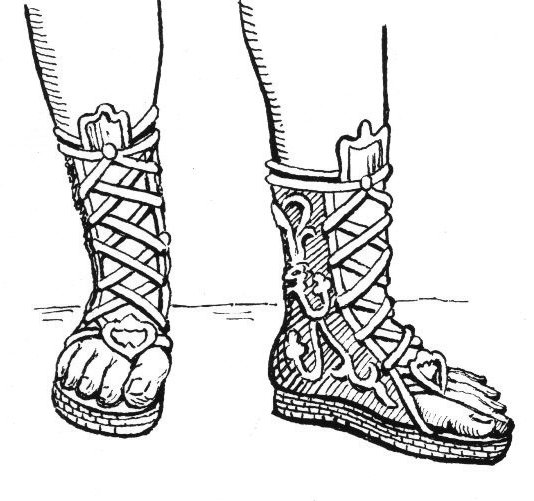Buskin
 A buskin is a knee- or calf-length boot made of leather or cloth, enclosed by material, and laced, from above the toes to the top of the boot, and open across the toes.
A buskin is a knee- or calf-length boot made of leather or cloth, enclosed by material, and laced, from above the toes to the top of the boot, and open across the toes. The word buskin, only recorded in English since 1503 meaning "half boot", is of unknown origin, perhaps from Old French ''brousequin'' (in modern French ''brodequin'') or directly from its Middle Dutch model ''brosekin'' "small leather boot".
A high-heeled buskin (Greek ''kothornos'' () or Latin ''cothurnus'') was worn by Athenian tragic actors (to make them look taller). Buskins therefore sometimes appear as a symbol of tragedy, often contrasted with "sock" (from Latin ''soccus''), the low shoe worn by comedians.
The buskin was also worn by hunters, and soldiers in Ancient Greek, Etruscan, and Roman societies, to protect the lower legs against thorns, dirt, etc.
Byzantine emperors were formally clad in purple buskins, embroidered in gold with double-headed eagles. Provided by Wikipedia
-
1